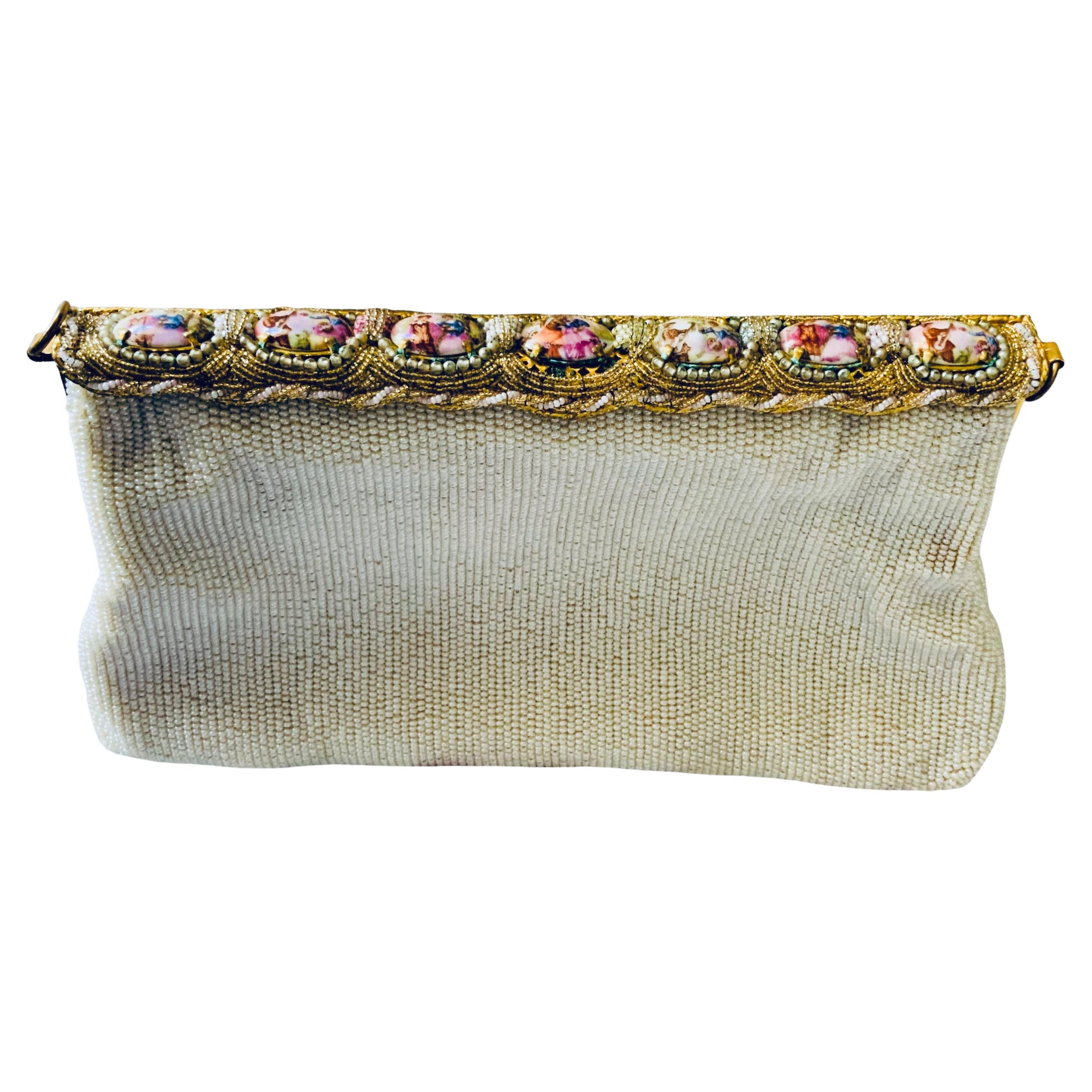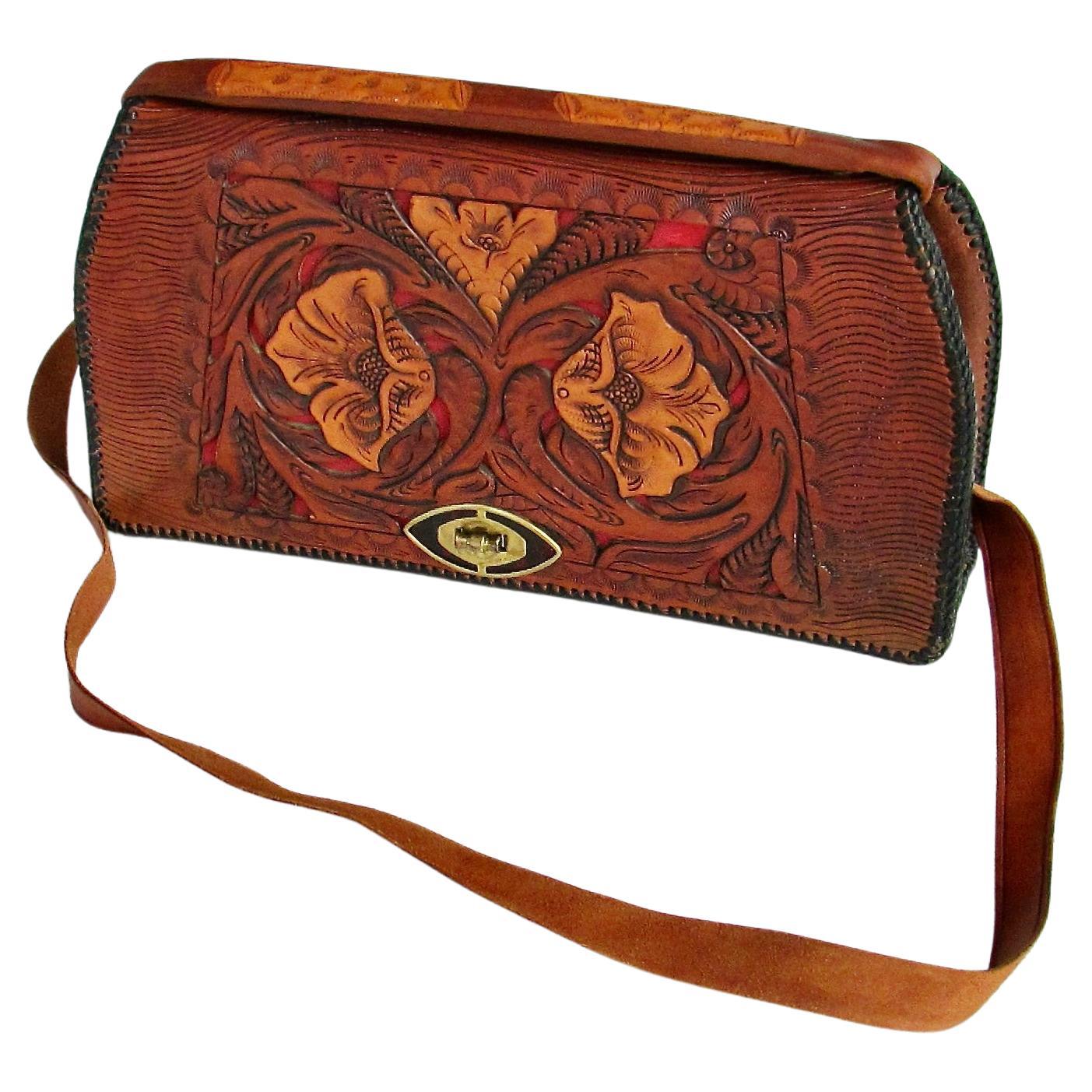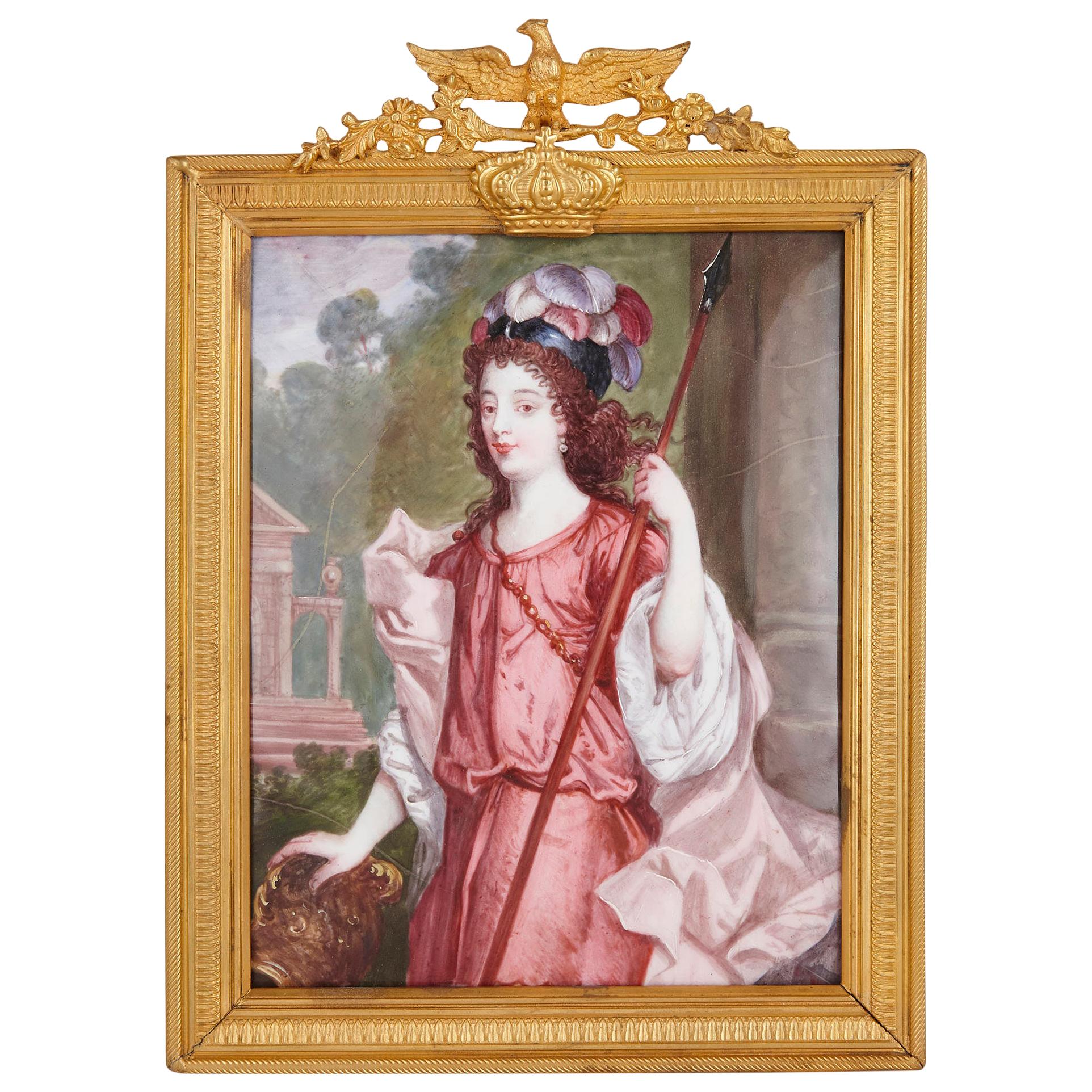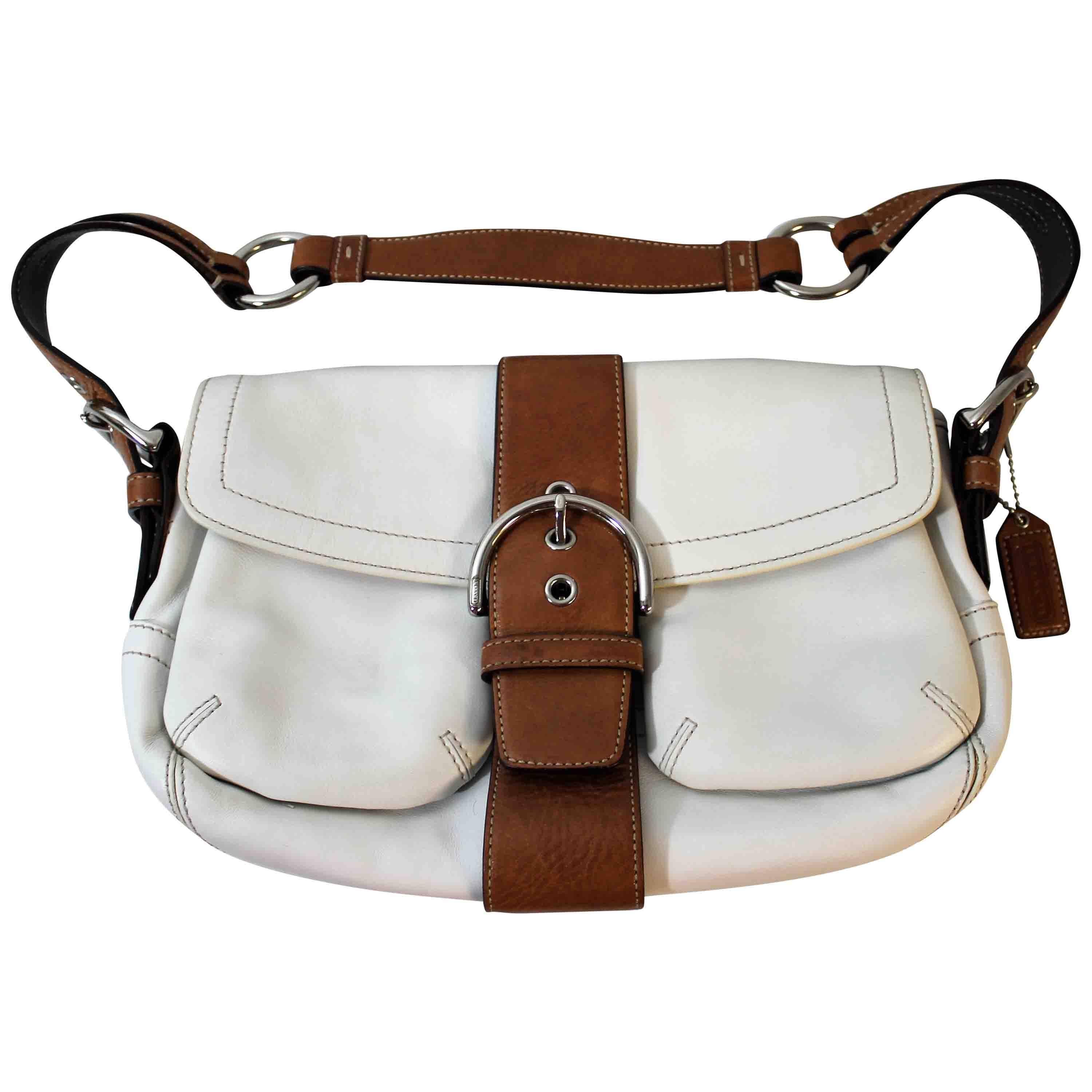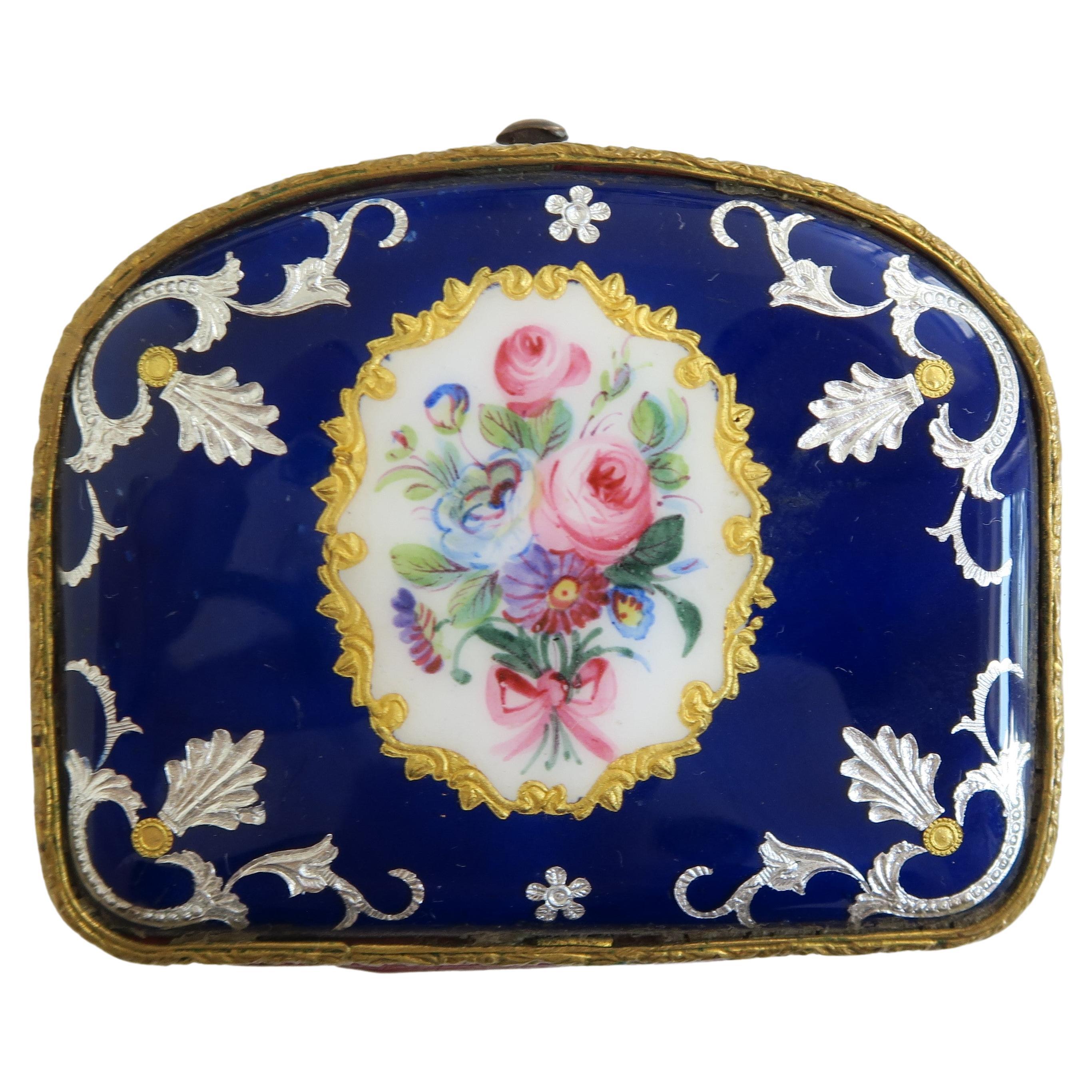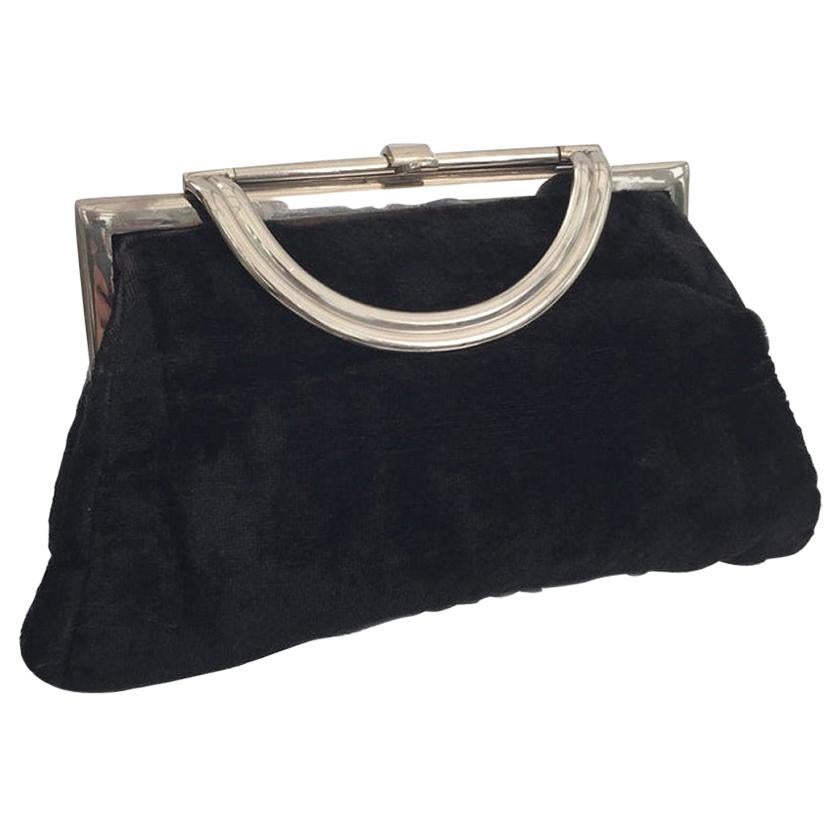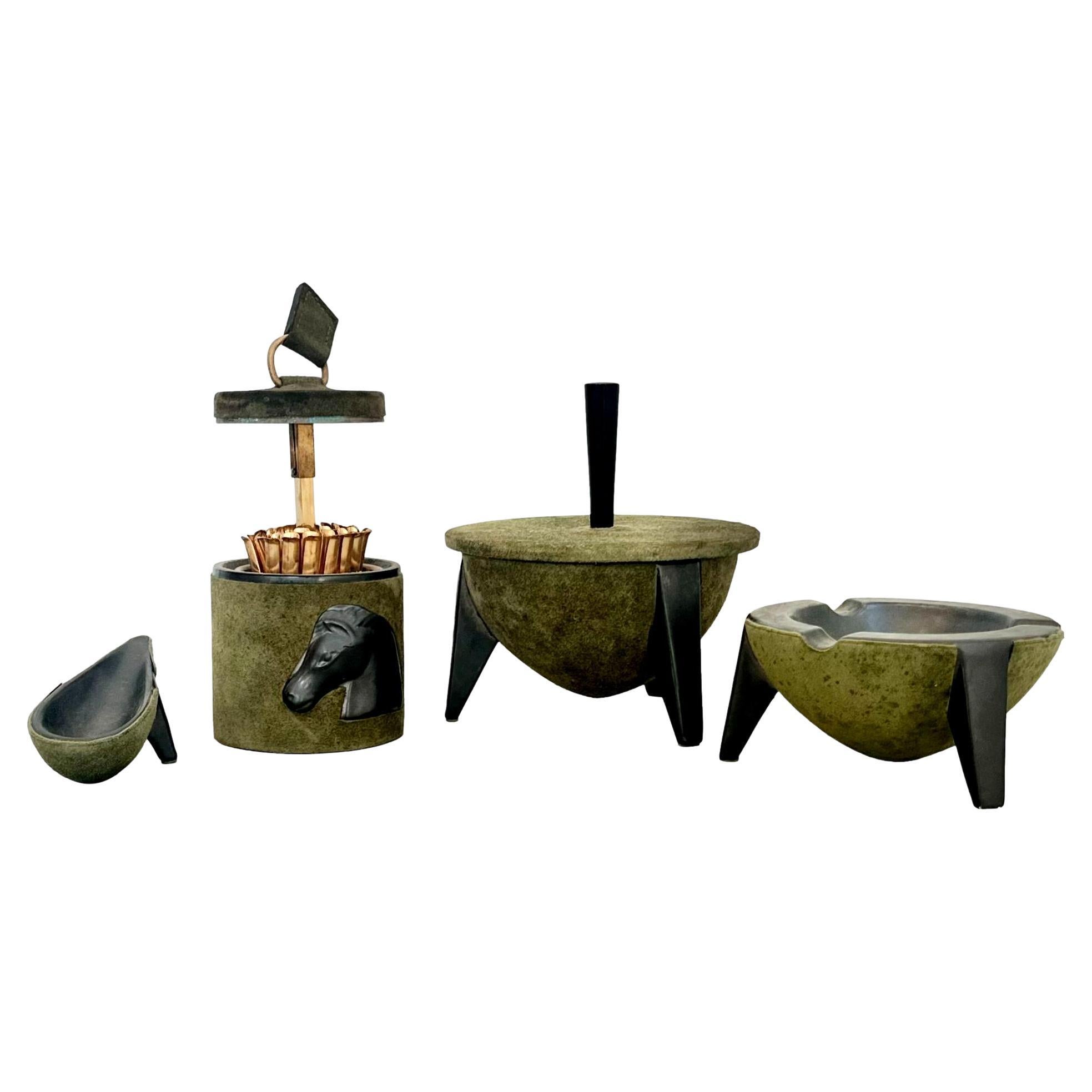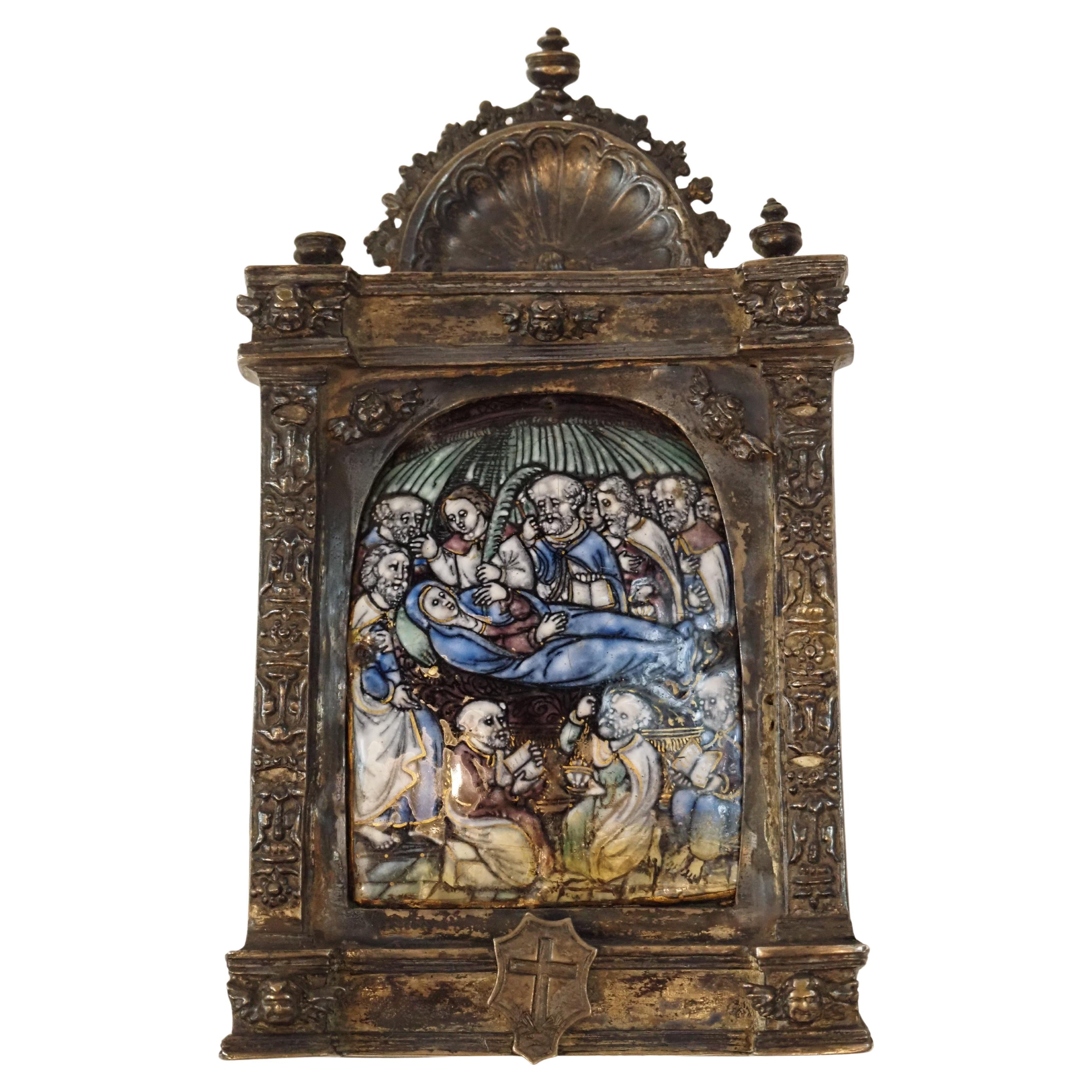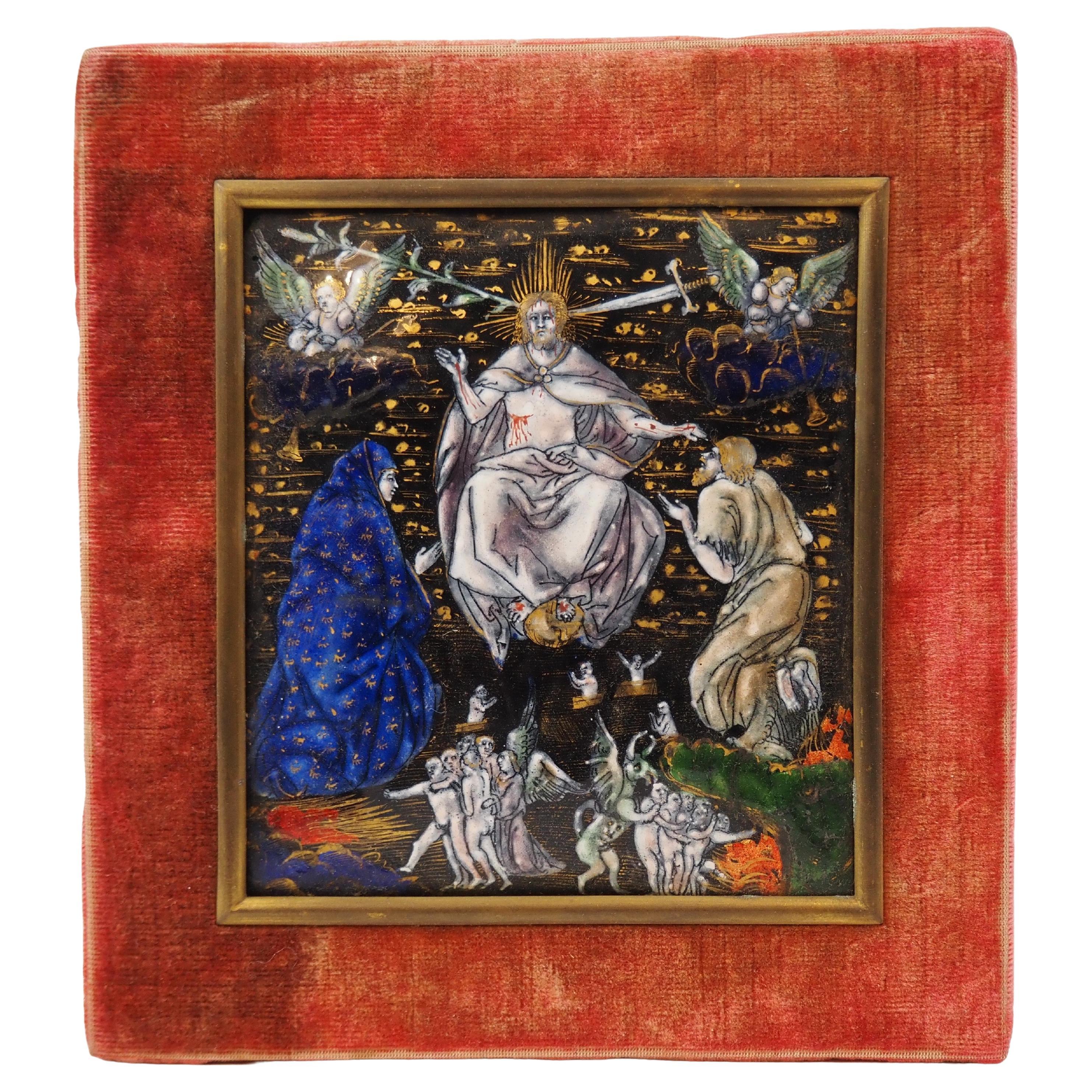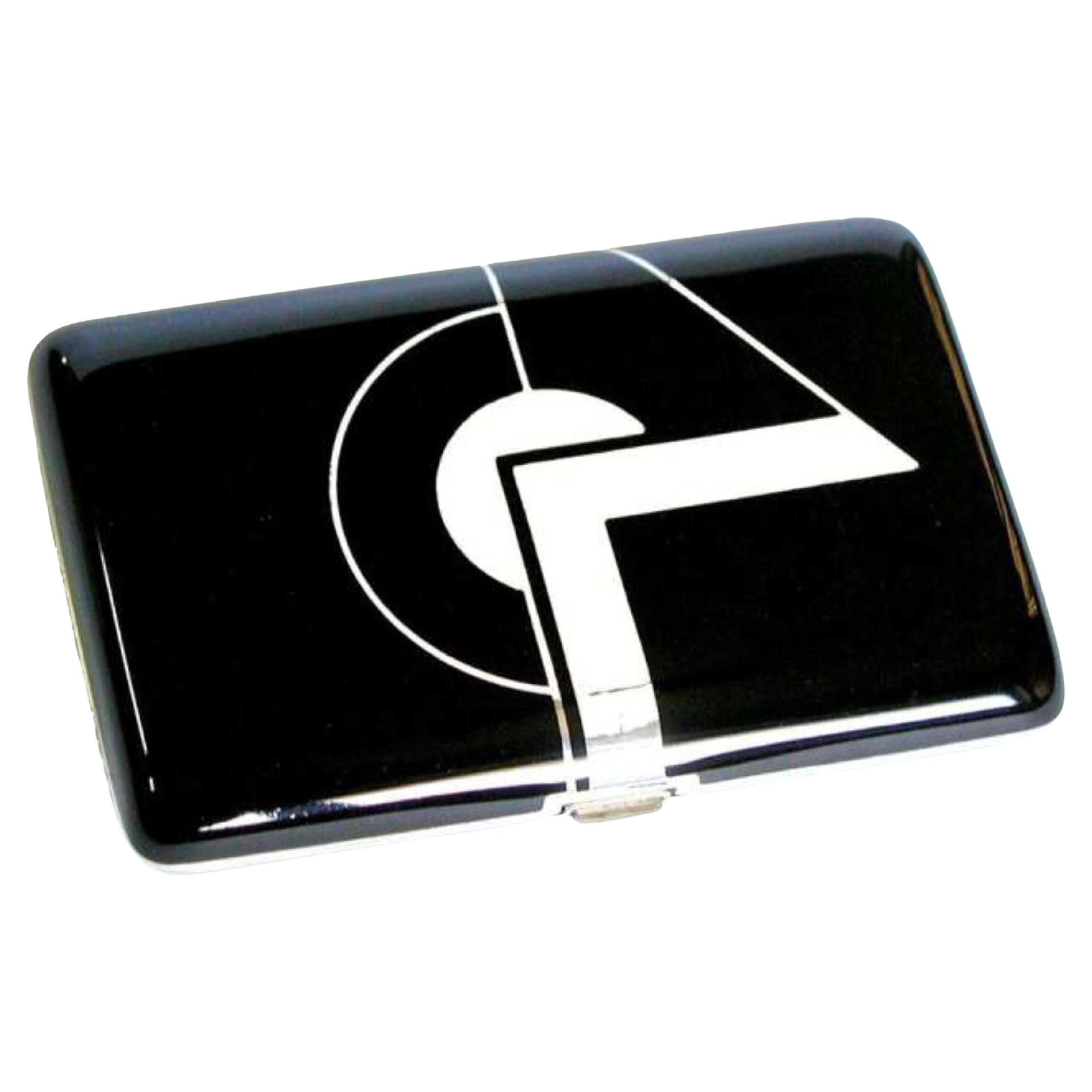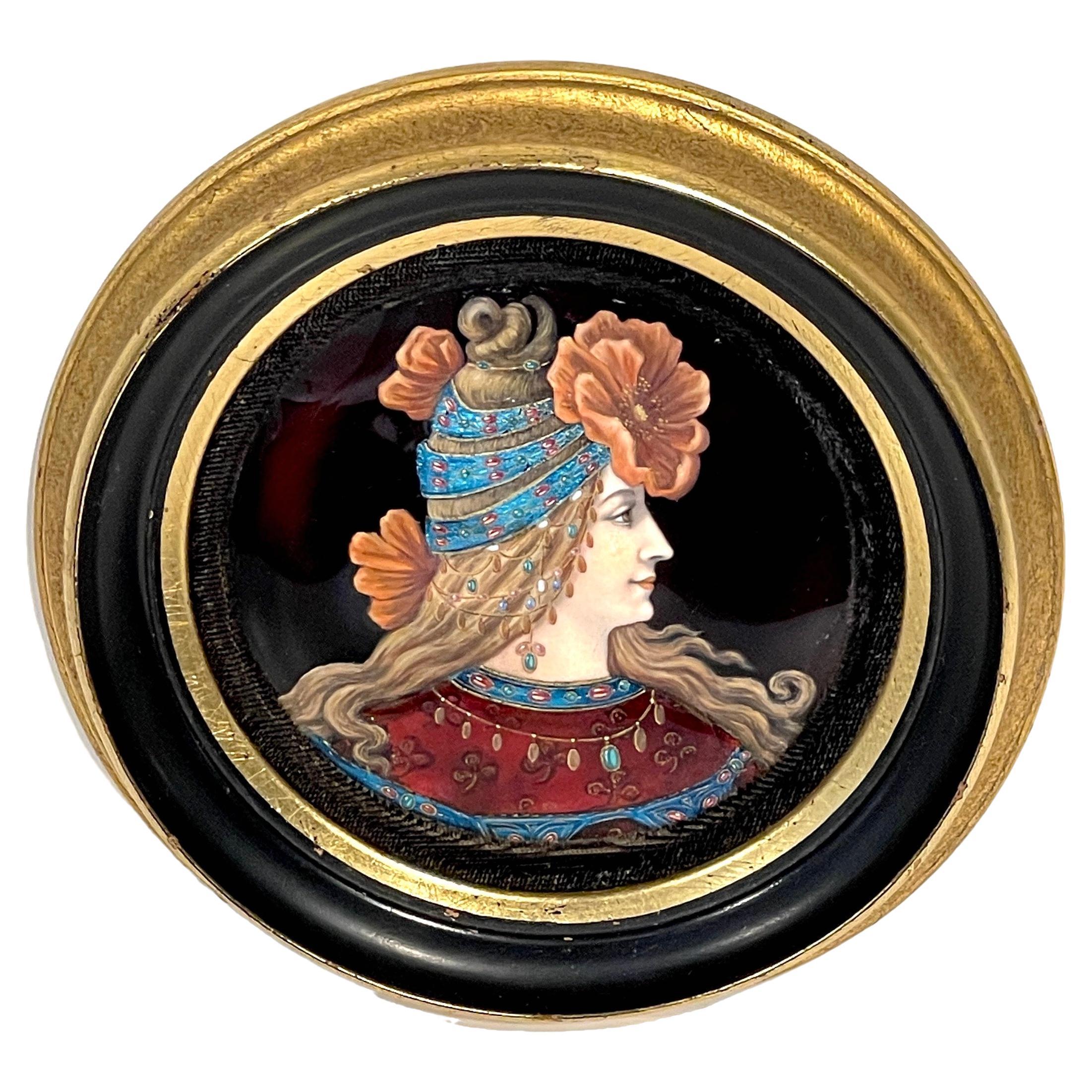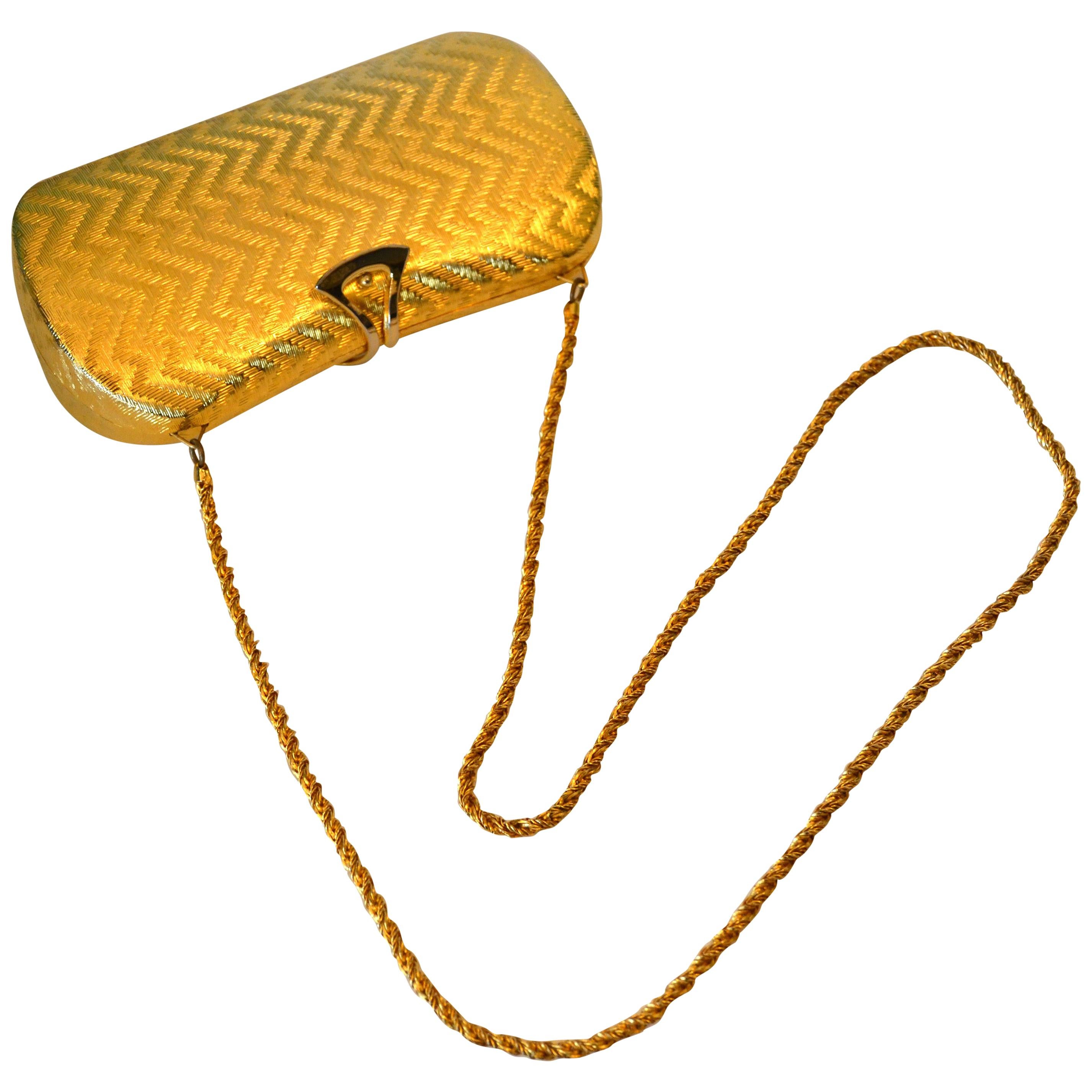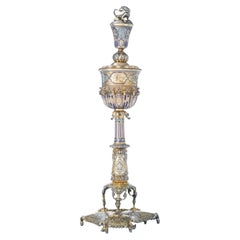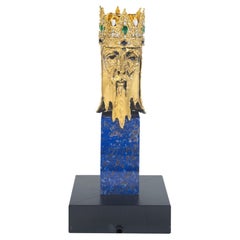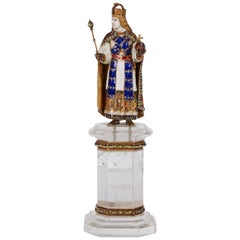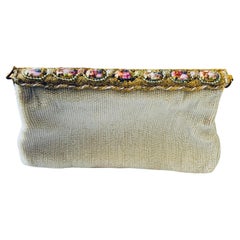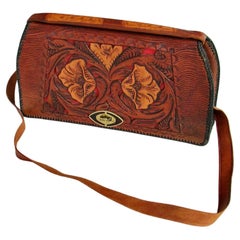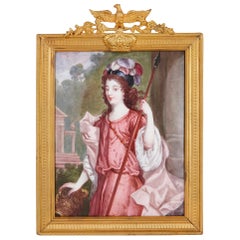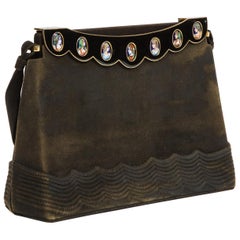
Elegant French Limoges Enamel and Black Suede Purse Handbag, George Baring, 1950
View Similar Items
Want more images or videos?
Request additional images or videos from the seller
1 of 16
Elegant French Limoges Enamel and Black Suede Purse Handbag, George Baring, 1950
About the Item
- Dimensions:Height: 6.5 in (16.51 cm)Width: 9 in (22.86 cm)Depth: 3 in (7.62 cm)
- Materials and Techniques:
- Place of Origin:
- Period:
- Date of Manufacture:circa 1950
- Condition:Wear consistent with age and use.
- Seller Location:New York, NY
- Reference Number:1stDibs: LU1798213674531
About the Seller
5.0
Vetted Professional Seller
Every seller passes strict standards for authenticity and reliability
Established in 1980
1stDibs seller since 2016
63 sales on 1stDibs
Typical response time: 6 hours
Authenticity Guarantee
In the unlikely event there’s an issue with an item’s authenticity, contact us within 1 year for a full refund. DetailsMoney-Back Guarantee
If your item is not as described, is damaged in transit, or does not arrive, contact us within 7 days for a full refund. Details24-Hour Cancellation
You have a 24-hour grace period in which to reconsider your purchase, with no questions asked.Vetted Professional Sellers
Our world-class sellers must adhere to strict standards for service and quality, maintaining the integrity of our listings.Price-Match Guarantee
If you find that a seller listed the same item for a lower price elsewhere, we’ll match it.Trusted Global Delivery
Our best-in-class carrier network provides specialized shipping options worldwide, including custom delivery.More From This Seller
View AllA Rare and Exquisite Silver, Enameled Chalice by Jules Wièse and Froment-Meurice
By François-Désiré Froment-Meurice
Located in New York, NY
A Rare and Exquisite French Silver and Enameled Two-Compartment Chalice Cup by Jules Wièse for François-Désiré Froment-Meurice, circa 1850
This exceptional 19th-century chalice cup,...
Category
Antique 19th Century French Religious Items
Materials
Silver, Enamel
$24,500 Sale Price
30% Off
A Rare Alexis Falize Antique Gold and Cloisonné Enamel Locket, Circa 1867
By Falize Frères
Located in New York, NY
A Rare Alexis Falize Antique Gold and Cloisonné Enamel Locket, Circa 1867
This exquisite oval-shaped locket, crafted circa 1869, epitomizes the fusion of French artistry and Japanese aesthetic that characterized Alexis Falize's work during the late 19th century. The obverse features a meticulously rendered cloisonné enamel scene of a bird perched gracefully on a branch, while the reverse presents a serene landscape, showcasing Falize's mastery of the cloisonné technique and his deep appreciation for Japanese motifs.
The locket is housed in its original Japanese silk box, reflecting the authenticity and preservation of this remarkable piece. Falize, a distinguished Parisian jeweler (1811–1898), was profoundly influenced by Japanese and Chinese art, integrating Oriental motifs and palettes into his creations. This fascination was part of the broader Japonisme movement that swept through Europe following Japan's opening to Western trade in 1854, introducing Japanese decorative arts to a captivated Western audience.
Employing the cloisonné enamel technique—a method prevalent in traditional Japanese and Chinese metalwork—Falize delineated intricate designs using fine metal wires to create compartments (cloisons), which were then filled with vibrant enamels. This locket exemplifies such craftsmanship, with its vivid colors and precise detailing. Notably, Falize collaborated with esteemed enameller Antoine Tard, renowned for his Oriental-style cloisonné enamels. Tard's exceptional skill earned him accolades, including a gold collaborator’s medal at the 1867 Exposition Universelle in Paris. Their partnership produced some of the most celebrated cloisonné jewels of the era.
Comparable works by Falize are held in prestigious institutions worldwide. The British Museum houses a gold locket adorned with cloisonné enamel by Falize, highlighting the significance of his work in their collection. The Metropolitan Museum of Art features a reversible brooch attributed to Falize, further exemplifying his expertise in cloisonné enamel. Additionally, the Cleveland Museum of Art acquired a similar cloisonné locket marked by Falize, underscoring the widespread recognition of his craftsmanship. The Victoria and Albert Museum and the Schmuckmuseum in Pforzheim also include Falize's cloisonné enamelled lockets in their collections, attesting to the enduring legacy of his work.
In the realm of private collections, Wartski London has featured rare cloisonné...
Category
Antique 19th Century French Collectible Jewelry
Materials
Gold, Enamel
An 18K Gold and Gem Set Bust of a King, by George Weil London
Located in New York, NY
An 18K Gold and Gem Set Bust of a King, by George Weil London, circa 1970
This magnificent 18K gold and gem-set bust of a king, crafted by George Weil in London, stands as an embodi...
Category
20th Century British Collectible Jewelry
Materials
Lapis Lazuli, Gold
Enamel Gold and Rock Crystal Figure of Emperor Maximilian I by Reinhold Vasters
Located in New York, NY
A rare enamel, gold and rock crystal figure of Emperor Maximilian I by Reinhold Vasters, Aachen,
In the Renaissance style, circa 1870.
The g...
Category
Antique Late 19th Century German Renaissance Figurative Sculptures
Materials
Rock Crystal, Gold, Enamel
Rare American Gold Intaglio Seal of George Washington, Early 19th Century
Located in New York, NY
A rare American gold mounted intaglio seal of a bust-length portrait of the first President in uniform enclosed by the inscription "George Washington", early 19th century.
In a fitted green leather box retailed by: D.S. Lavender Antiques Ltd., Bond Street, London, England;
Provenance:
D.S. Lavender Antiques Ltd., Bond Street, London, England
Anita and Irvin Schorsch Collection
Exhibited:
Museum of Mourning Art...
Category
Antique 19th Century American American Classical Historical Memorabilia
Materials
Gold
$12,500 Sale Price
50% Off
Mellerio Paris, A French Gold, Diamonds, Silver, and Smoky Quartz Carved Horse
By Mellerio
Located in New York, NY
Mellerio Paris, A French Gold, Diamonds, Silver-Gilt, Rock-Crystal, Jade, Mother-Of-Pearl and Smoky Quartz, Carved Horse Sculpture, Jeweled Mounted Object.
An extremely rare and unique, one of a kind French gold, diamonds, Silver-gilt, rock-crystal, jade, obsidian, mother-of-pearl, and smoky quartz carved jeweled sculpture "CHEVAUX DE LEGENDE", "A Legendary Horse" by Mellerio, Paris, circa 1991.
Sitting on black obsidian base, the solid rock-crystal slab is finely applied with a carved smoky -quartz and jade horse with a harness mounted in 18k gold, brilliant -cut diamonds, rubies, turquoise, and amethyst chains and pendants. The top columns adorned with 18k gold and brilliant cut diamond pendants, the bottom with gold and mother of pearl plaques. The obsidian base with a plaque engraved: CHEVAUX DE LEGENDE" / N° 05 / MELLERIO DITS MELLER / PARIS / 5003 D
The piece is in excellent condition and comes with a custom made wood case made for transport. It's very elegant and has French hallmarks throughout. A truly magnificent piece.
Measures 10.5" high x 8.5" wide x 4" deep
Founded in France in 1613 by the descendants of Italian immigrants from the Vigezzo Valley in the north of Italy, Mellerio is one of the oldest jewellery houses in Europe. The family business soon attracted the attention of the Royal Court and Marie Antoinette herself reportedly purchased a precious bracelet featuring 7 cameos surrounded by rubies in 1780. Later on, in the 19th century, Mellerio became the official supplier of the French Royal family and the Court of Netherland.
Mellerio creates many jewellery items, all set with rare gems such as peridots, amethysts, aquamarines, citrines and topaz, applying for a patent, the flexible stem, a very supple and light jewellery mechanism. Mellerio remains also well known for their spectacular series of Art Nouveau jewels, created at the beginning of the 20th century, as well as for the creation of trophies rewarding some of the greatest footfall and tennis players of history. In 1993, the jewellery house launched their first watch collection.
Today, Mellerio has stores in Paris, Japan and Hong Kong.
July 14, 1789: this date is known throughout the world as the beginning of the French Revolution. According to a ledger belonging to House of Mellerio, this was also the day that the jeweler sold a golden key to the Comte de Coutance for 10 livres. This ledger, as well as inventories dating as far back as 1768, are the jeweler’s oldest archives. These archives have continued to grow over the years, as the House, established on rue de la Paix in Paris, still lives on today, still in the hands of the same family from Craveggia, in the North of Italy.
The tumultuous history of the Mellerio family in France probably goes as far back as the Italian wars of the Renaissance, but the first official document proving their commercial activity in Paris dates back to 1613. This document is the famous royal warrant awarded by Marie de Medici to a number of Italian families established along the rue des Lombards, including the Mellerios, allowing them to sell “small jewelery items”, therefore granting them a small exception to the traditional monopoly enjoyed by Parisian jewelers. At that time, powerful corporations regulated the operations and customs of Parisian business, but thanks to this exceptional warrant, the Mellerios managed to escape the confines of this framework. Today, this wax-sealed document is kept at the city hall of Craveggia.
From 1613 to the Revolution, the Mellerios lived between France and Italy. The corporations tried many times to put an end to their trade privileges, but all in vain, as a dynasty of sovereigns renewed the warrant. Always marrying and often retiring in Craveggia, the Mellerios continued to maintain their jewelry business in Paris. At first, they did this without a shop. Wearing backpacks (wooden boxes divided into small compartments where jewels were kept), they would tour town fairs around Paris and royal castles.
This is how Jean-Baptiste Mellerio (1765-1850) is said to have sold a bracelet set with rubies and Antique cameos to Marie-Antoinette, which still exists today. Many elements seem to prove the veracity of this anecdote. The queen was particularly fond of cameos, which cover the entire background of her famous jewelry cabinet, and ruby was her favorite stone after diamond. The famous bracelet, reacquired a few years ago by the House of Mellerio, is indeed an 18th century jewel, set with antique cameos representing the profiles of Roman emperors. Two branches of the family were operating in Paris during this time, under the reign of Louis XVI: that of Jean-François (1746-1828), the paternal ancestor of the current Mellerios, and that of Jean-Baptiste (1765-1850).
The French Revolution forced them to return to Italy. However, both Jean-Baptiste and François Mellerio (1772-1843), who was the son of Jean-François, were eventually able to return to Paris after the founding of the Consulate. Jean-Baptiste opened a shop at the Iron Crown of rue Vivienne, and François opened his at the Palais des Tuileries, rue du Coq Saint-Honoré. His well-organized order books give an idea of his high-ranking clientele during the “Old Regime”, among which were the Comte and Comtesse Octave de Segur, the Marquise (later Duchess) de Tourzel, former governess of the royal children, and her daughter, the Comtesse de Bearn, the Craufurds -who organized the flight to Varennes, the Duc and Duchess de Gramont, the Comtesse de Boigne, and Madame de Souza, Talleyrand’s mistress.
We also see the names of the imperial family: Empress Josephine, the Queen of Holland, Princess Elisa, Caroline and Pauline. At that time, the House of Mellerio specialized, among other things, in the trade of antique cameos, a newly fashionable genre of jewel that captured the imagination of all the princesses and noble women of the time.
The years of the Restauration and July Monarchy were among the most glorious. The Bourbons were back on the throne, and the clientele of the House of Mellerio had regained its former wealth. Mellerio supplied Louis-Philippe, Duke of Orléans, as well as his mother, wife and sister, with sumptuous jewels, including a set of emeralds made piece by piece, while the Duke of Bourbon, last prince of the House of Condé, offered diamonds to his mistress, the scheming Baronne de Feucheres, and Monsieur de LaFayette also bought cameos for one of his granddaughters. For the first time, Mellerio ventured into the world of arts in 1815, when Carlotta Grisi, a famous dancer who created Giselle, as well as an actress named Rachel, bought jewels at the Mellerio store on rue de la Paix.
1848 marked a new turning point. France once again became a Republic. François Mellerio handed the company over to his son, Jean, and the latter decided to travel to Spain to build a new clientele. He later became one of the jewelers of the royal family, and met Eugénie de Montijo, who remained a faithful client when she became empress of the French people. The Imperial years were lavish. During the Second Empire, Paris was a pageant of crinoline dresses designed by Worth, while jewels by Mellerio, Worth’s neighbour on the rue de la Paix, adorned the noble women of the Tuileries court.
The Empress bought pearls. Mathilde Bonaparte...
Category
20th Century French Mounted Objects
Materials
Rock Crystal, Jade, Quartz, Gold, Silver
You May Also Like
French Beaded Evening Handbag With Limoges Porcelain Cameos
Located in Guaynabo, PR
This is a French beaded evening’s handbag. It depicts a rectangular handbag body that has been hand stitched completely with tiny white pearly like bead glass. The work looks neatly done. At the upper top, there is a gold tone metal rectangular hinged lid/“door” with scalloped border adorned with gold and white glass beads that has been twisted and/or braided. Seven Limoges porcelain cameos...
Category
20th Century French Models and Miniatures
Materials
Metal
$316 Sale Price
20% Off
1950s fine Tooled Leather Western Theme Ladies Handbag Purse
Located in Ferndale, MI
Nicely and highly tooled western theme leather purse . Decorated on both sides and the interior . Open the flap to find red interior and equestrian embellishment . Wonderful conditi...
Category
Mid-20th Century American American Classical Collectible Jewelry
Materials
Leather
'Duchesse de Richmond' French Limoges Enamel Portrait Plaque
Located in London, GB
'Duchesse de Richmond' French Limoges enamel portrait plaque
French 19th century
Height 22cm, width 16cm, depth 2cm
This exquisite Limoges enamel plaque is based on a painting of the Duchess of Richmond by the 17th century French artist, Henri Gascar...
Category
Antique 19th Century French Decorative Art
Materials
Bronze, Enamel, Ormolu
Leather Coach Handbag or Purse
By Coach
Located in Hamilton, Ontario
Leather coach handbag or purse.
Category
Late 20th Century Collectible Jewelry
Materials
Leather
1850 Austrian Enamel Coin Purse
Located in Vienna, AT
For sale is a unique little Biedermeier coin purse. Its case is made of brass covered in royal blue enamel. The lid displays an oval gold colored frame filled with white enamel with ...
Category
Antique Mid-19th Century Austrian Biedermeier Collectible Jewelry
Materials
Brass, Enamel
Stylish Art Deco Velvet and Chrome Handbag Purse, circa 1930s
Located in Devon, England
For your consideration is this superbly stylish and rare 1930s black silk velvet clutch bag originating from England. Features a chrome frame and cla...
Category
Mid-20th Century English Art Deco Collectible Jewelry
Materials
Chrome
Recently Viewed
View AllMore Ways To Browse
Eyeglasses Case
Hand Crafted Italian 18 Karat Gold
Jarrige Necklace
Qing Hairpin
Bedouin Silver Bracelets
Berber Fibula
Vintage Italian Mosaic Brooch
Emilio Pucci Plate
Jacob Hull Denmark
Jacob Hull Jewelry
Tibetan Necklaces
Vintage Slinky In Box
Wiener Werkstatte Brooch
Antique Conchos
Josef Hoffmann Brooch
Matl Matilde Poulat
Matl Poulat
Matl Silver
